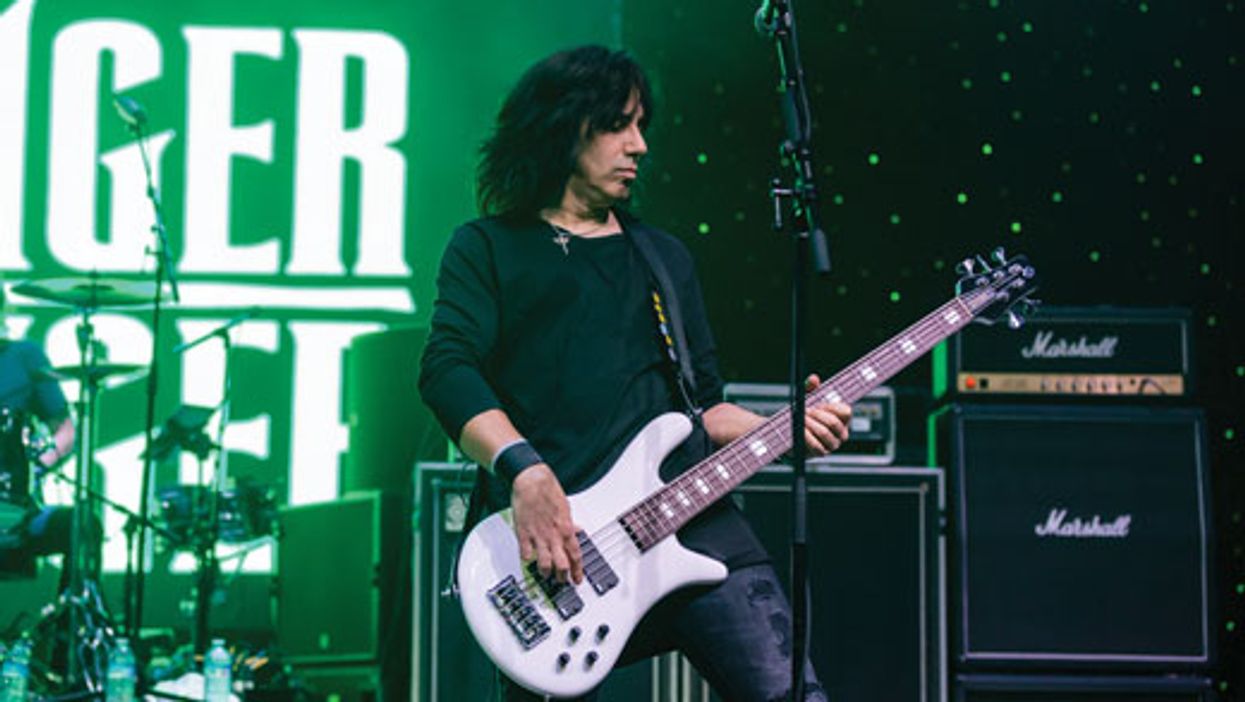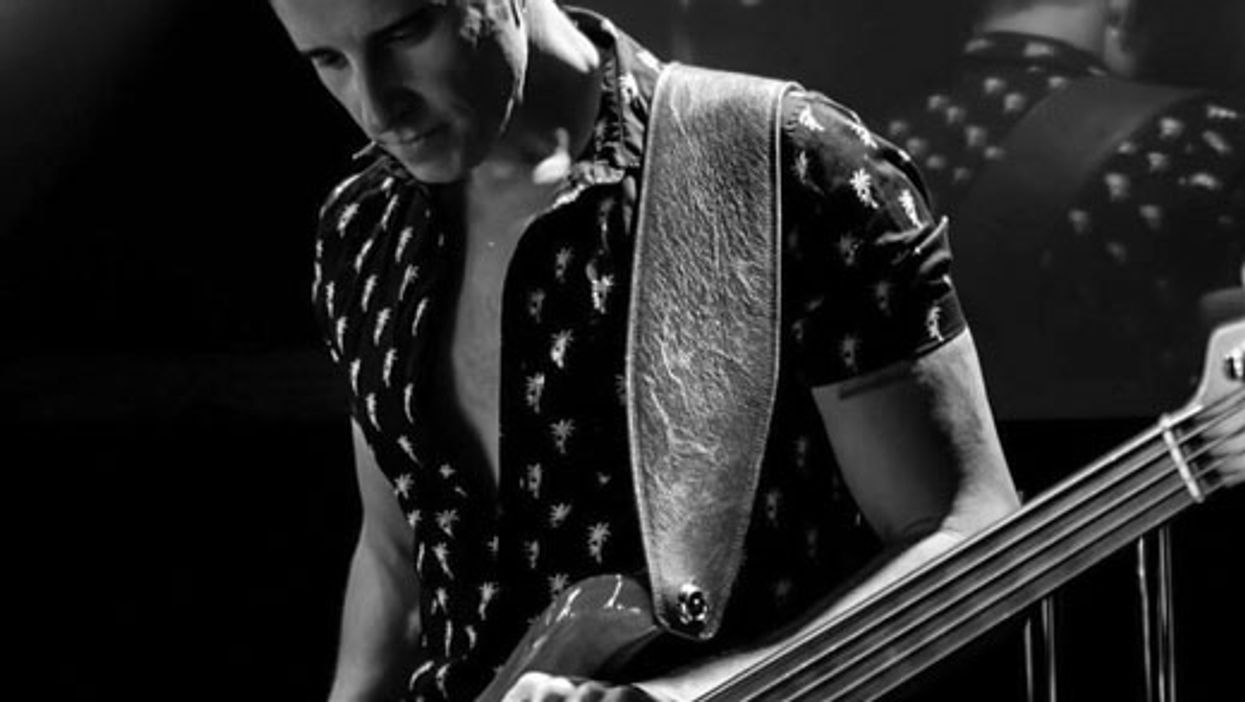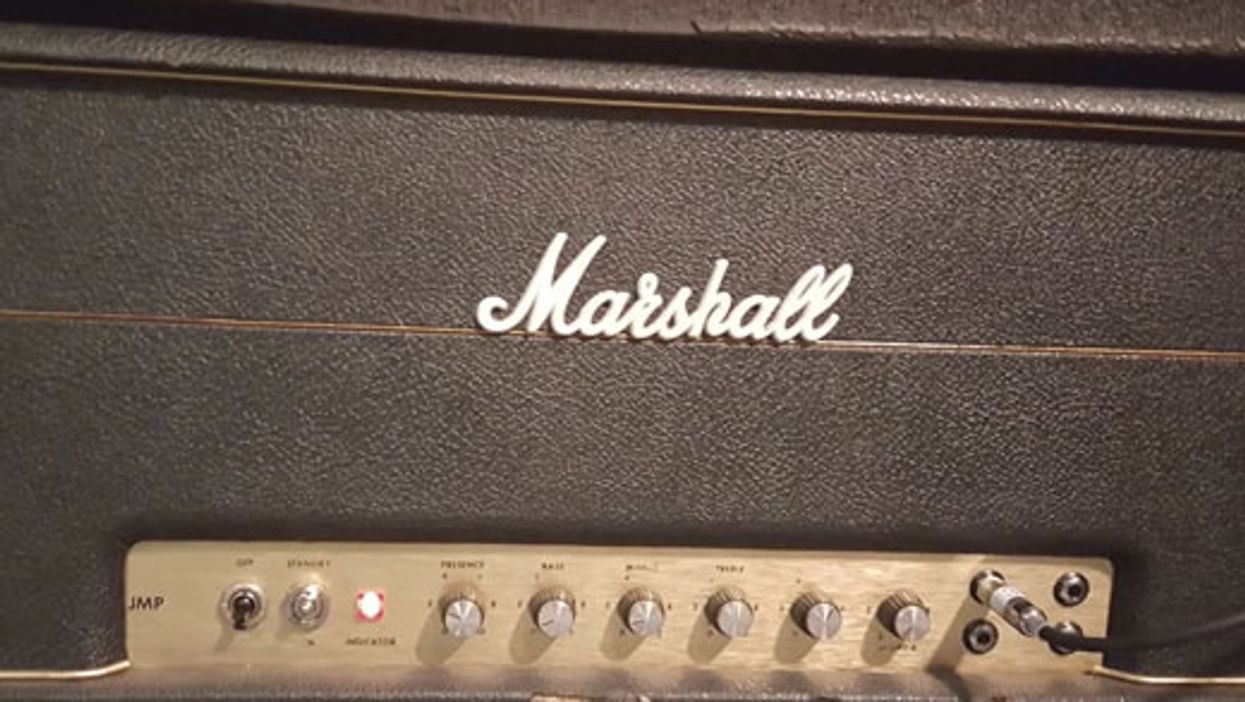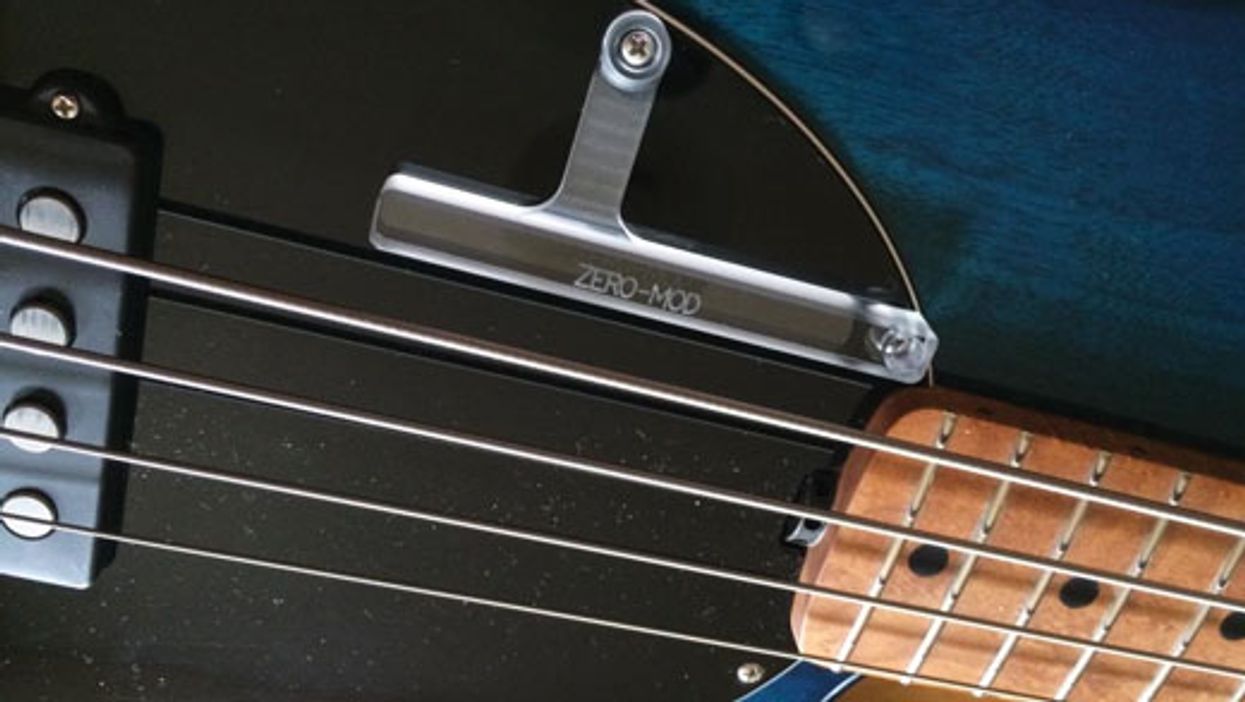If you are a guitarist or bassist who is old enough to have lived through a few stylistic trends in rock, you know that each one comes with its own tone or amp trend as well. For the guitarist, the signs are pretty obvious. A few years back, for example, it was nearly impossible to hear a heavy rock album without a Mesa/Boogie Rectifier melting your face. But when it comes to bass, there is a singular tone that has survived through most of rock ’n’ roll’s trends and can be heard in most genres of rock—be it the British new wave and punk bands of the ’70s, the hair-metal bands of the ’80s, or the modern rock and punk bands of the ’90s and today. That timeless thunder is the sound of a Fender P bass played with a pick while fueling an Ampeg SVT and 8x10 speaker cabinet.

1. While trends come and go with guitar amps, this vintage Ampeg has continued to deliver the rock tone for bass that won’t go away—in spite of musical trends. Getting the high end to break up a little without really distorting provides that special “toaster tone.” 2. Cutting the mids at the right frequency, engaging the ultra-low switch, and making sure your volume is turned up loud enough will make a vintage Ampeg respond with the perfect tone when you plug in a P bass.
When that tone is executed correctly, it is square one for rock bass. In fact, it has been rock’s sonic standard for decades. Just listen to “The Middle” by Jimmy Eat World, “All Fired Up” by Pat Benatar, “Piece of Me” by Skid Row, or “Warning” by Green Day, and you’ll get an earful of exactly how this classic, bright tone is supposed to sound.
So how does one deliver this classic bass tone? With their thick necks, P basses from the ’70s are certainly a good starting point, and the fretboard should be maple to really accentuate the growl, midrange “woodiness,” and attack of the pick. Pick attack location is vital to this tone too—you should be hitting the strings right above the pickup or just a little bit behind it.
Personally, I use D’Addario medium-heavy picks that are 0.99 mm thick. Some players prefer a lighter pick to coax more zing and brightness from the strings, while others may choose a lighter gauge for increased playing speed. But remember: If your pick is too light, you’ll lose low end and some of the buil-tin, kick-drum effect that’s at the heart of good plectrum tone.
For strings, they must be roundwounds. Luckily, there are a variety of high-end roundwounds available from different manufacturers—all with their own personality. Some brands have a cleaner, pointed top that sound good for slapping, while others have a wide top end that sounds amazing with a pick. Rotosound’s Swing Bass 66 series have been one of the most popular roundwound sets for many years, and D’Addario ProSteels are a great choice to achieve the “tone that won’t go away.”
But the secret to getting this tone really lies in the amplifier, and my amp of choice is a ’74 Ampeg SVT. The versions the company made from ’71 through ’76 are the magical models, and they are legendary for a reason. They sound the best when you push them hard. No other amp has come even close to sounding as sweet when pushed like my ’74.
My standard procedure for getting the amp “pick ready” is to engage the ultra-low rocker switch, set the assignable midrange- frequency rocker switch to 800 Hz, cut the midrange knob to about 10 o’clock (cutting the midrange is an essential element for any great pick tone), and boost the treble to 2 o’clock. The magic starts to appear with a big, warm sound once the volume is set above 9 o’clock, but the tone will not sound aggressive until you really dig in with the pick. When you do so, you’ll get a high end that isn’t distorted—in the traditional meaning of the word— but rather a little dirty or fuzzy, while still retaining punch and clarity. I call it the “toaster tone” because your top end gets the same treatment that a piece of bread gets in the toaster—it gets tougher, crunchier, a little discolored, and a lot tastier.
Of course, the cabinet also plays a huge role in this tone. And pairing the SVT with an 8x10 speaker enclosure is a great fit, especially in a live setting. The secret lies in the fairly low power-rating of each driver— they actually sound like they are working hard. By doing so, they help the top end sound a little dirtier—without really being distorted—just like the amp does. Conversely, many of the modern 4x10 enclosures will not give you the impression they are working hard when pushed, because of the higher power-rating per speaker. In a studio setting with a mic, I actually prefer a 1x15 cabinet when playing with a pick. Because I tend to play fairly aggressively, a 15" speaker softens my attack just a bit while still giving the recorded tone some extra size.
But what if you don’t own these particular pieces of gear? Is it possible to get into the tonal ballpark with a combo amp or solid-state rig? Yes. Pedals can actually do a very nice job of replicating the setup we’ve been discussing. To name just a couple, the Tech 21 VT Bass and the MXR Bass D.I.+ both do a great job of simulating a tube amp and will give the impression of a slightly overdriven cabinet. When using the MXR, I’ll engage the distortion channel and turn the settings all the way down. Doing this scoops out the mids and adds just enough dirt to get the desired tone without sounding like a distortion pedal. With the Tech 21 pedal, it’s a matter of simply setting the character control to 9 o’clock, adding a touch of the drive control, and voilà—the effect we’re looking for.
So there you have it … everything you need for one of the most enduring bass tones of all time. Even if you’re not in the market to throw down big bucks for the vintage gear, you can get close to the “rock bass tone that won’t go away” through other rigs.
 Victor Brodén
Victor BrodénNashville bassist and producer Victor Brodén has toured and recorded with more than 25 major-label artists, including LeAnn Rimes, Richard Marx, Casting Crowns, and Randy Houser. His credits also include Grammy-winning albums and numerous television specials on CMT and GAC, as well as performances on The Tonight Show and The Ellen DeGeneres Show. You can reach him at vbroden@yahoo.com.







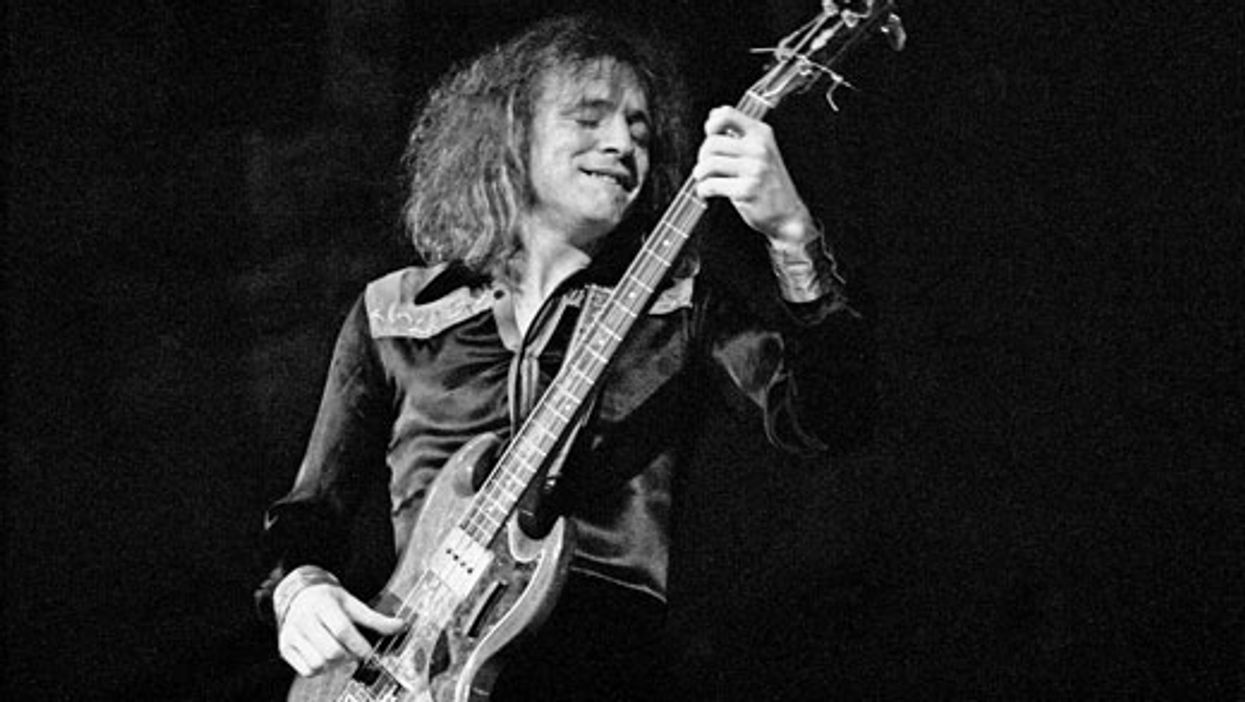



![Rig Rundown: Russian Circles’ Mike Sullivan [2025]](https://www.premierguitar.com/media-library/youtube.jpg?id=62303631&width=1245&height=700&quality=70&coordinates=0%2C0%2C0%2C0)


